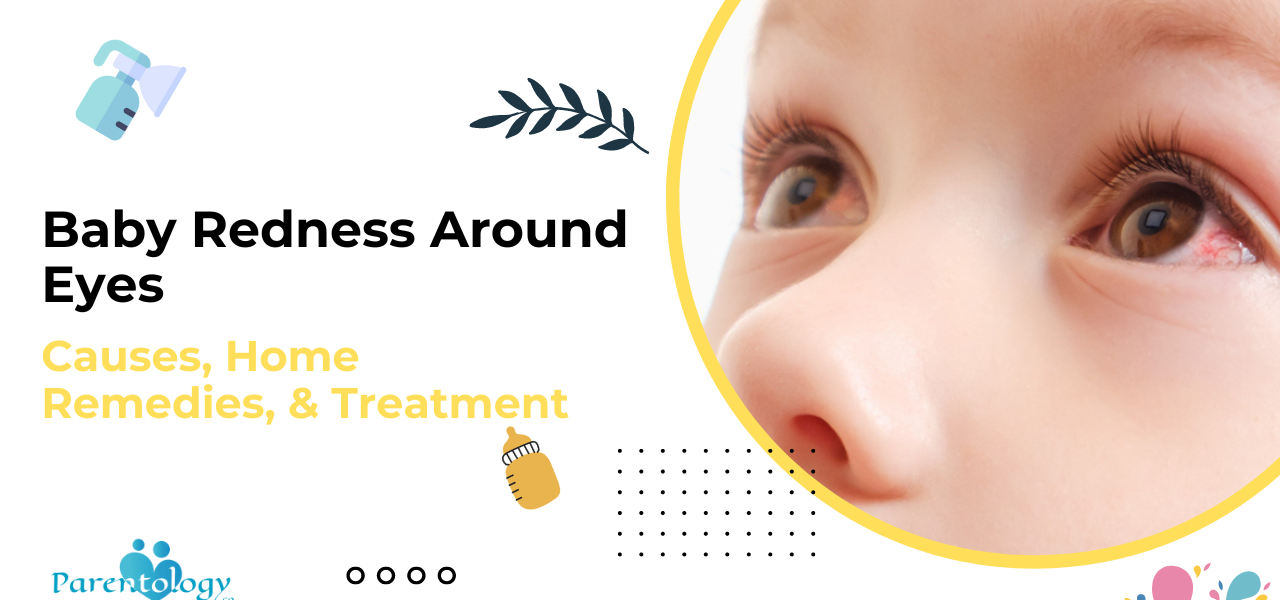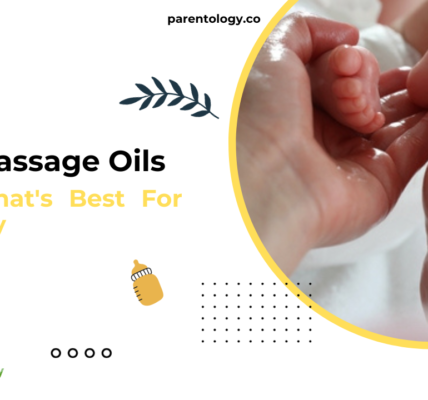Baby Red Around Eyes: Causes, Home Remedies, And Treatment
The joy of welcoming a baby into the world is unparalleled, but concerns about their health can be overwhelming. One common issue parents encounter is redness around their baby’s eyes. In this comprehensive guide, we’ll delve into the causes, effective home remedies, and treatments for redness around a baby’s eyes.
Understanding Redness Around Eyes
The delicate skin around a baby’s eyes is susceptible to various irritations and conditions, leading to redness. It’s crucial for parents to identify the root cause to ensure proper care and treatment.
Causes of Redness Around Eyes in Babies
1. Allergies
- Description: Allergies to common environmental factors, such as pollen, dust, or pet dander, can trigger redness around a baby’s eyes.
- Additional Information: Identifying specific allergens through consultation with a pediatrician is crucial for effective management.


2. Dry Skin
- Description: The sensitive skin around a baby’s eyes may become dry, leading to red and irritated patches.
- Additional Information: Regular moisturization using baby-friendly products helps prevent dryness and subsequent redness.
3. Irritants
- Description: Exposure to harsh chemicals found in soaps, shampoos, or lotions can result in skin irritation and redness.
- Additional Information: Opting for hypoallergenic and fragrance-free baby care products minimizes the risk of irritant-induced redness.
4. Conjunctivitis
- Description: Commonly known as pink eye, conjunctivitis is a contagious infection that causes redness, itching, and discharge.
- Additional Information: Practicing good hygiene, such as regular handwashing, can prevent the spread of conjunctivitis.
5. Blocked Tear Ducts
- Description: Blocked tear ducts can lead to tears pooling around the eyes, causing redness.
- Additional Information: Gentle massage techniques recommended by a healthcare professional may help open blocked tear ducts.
6. Bacterial Infection
- Description: Bacterial infections can cause redness and discharge around the eyes.
- Additional Information: Antibiotic eye drops prescribed by a pediatrician are effective in treating bacterial infections.
7. Fabric Allergies:
- Description: Some babies may develop redness due to sensitivities to certain fabrics.
- Additional Information: Opt for clothing made from soft, breathable materials to minimize skin reactions.
8. Introduction of Solid Foods:
- Description: Redness may coincide with the introduction of solid foods.
- Additional Information: Monitor for any allergic reactions to new foods and consult a pediatrician if concerns arise.
Home Remedies for Redness Around Eyes
1. Gentle Cleansing
- Description: Use a soft, damp cloth to gently clean the area around the eyes, avoiding harsh soaps and cleansers.
- Additional Information: Perform cleansing with care to avoid further irritation.
2. Moisturize
- Description: Apply a hypoallergenic baby moisturizer to keep the skin hydrated and prevent dryness.
- Additional Information: Choose moisturizers with natural ingredients to minimize the risk of allergic reactions.


3. Warm Compress
- Description: Use a warm, damp cloth as a compress to soothe irritation and reduce redness.
- Additional Information: Ensure the cloth is clean and at a comfortable temperature for the baby’s delicate skin.
4. Allergen Control
- Description: Identify and minimize exposure to potential allergens in the baby’s environment.
- Additional Information: Keep living spaces clean, use air purifiers, and consult with an allergist for comprehensive allergen control.
5. Cool Cucumber Slices
- Description: Place cool cucumber slices on closed eyelids to reduce inflammation and soothe redness.
- Additional Information: Cucumbers have natural anti-inflammatory properties that can be beneficial.
When to Seek Medical Attention
If redness persists or is accompanied by additional symptoms such as swelling, discharge, or changes in behavior, consult a pediatrician promptly.
1. Persistent Redness
- Description: If redness persists despite home remedies, consult a pediatrician for a thorough examination.
- Additional Information: Prolonged redness may indicate an underlying issue that requires professional attention.
2. Swelling and Discharge
- Description: If redness is accompanied by swelling, discharge, or changes in eye appearance, seek immediate medical attention.
- Additional Information: These symptoms may indicate an infection or other serious eye condition.
3. Changes in Behavior
- Description: If the baby shows signs of discomfort, excessive rubbing of the eyes, or changes in behavior, consult a healthcare professional.
- Additional Information: Changes in behavior can be indicative of pain or irritation that requires prompt evaluation.
4. Worsening Symptoms
- Description: If symptoms worsen despite home care, including increased redness or spreading of irritation.
- Additional Information: Early intervention is crucial to prevent complications and ensure the baby’s eye health.
5. Fever
- Description: If redness is accompanied by fever, it may indicate a systemic infection requiring medical attention.
- Additional Information: Monitoring the baby’s overall health is essential for comprehensive care.
Preventive Measures
-
Avoiding Direct Sunlight:
-
-
- Description: Shield the baby’s eyes from direct sunlight, as UV rays can contribute to skin irritation.
- Additional Information: Use a wide-brimmed hat or sunglasses designed for infants when outdoors.
-
-
Proper Hydration:
-
-
- Description: Ensure the baby stays well-hydrated, as dehydration can exacerbate skin dryness and redness.
- Additional Information: Encourage breastfeeding or formula feeding as per the baby’s age and needs.
-
-
Regular Eye Examinations:
-
- Description: Schedule regular check-ups with a pediatrician or pediatric ophthalmologist to monitor eye health.
- Additional Information: Early detection of eye-related issues can lead to timely intervention and better outcomes.
Dispelling Myths
- Milk as a Remedy:
- Description: While a common belief, applying milk to red areas may not be suitable for all babies.
- Additional Information: Consult with a healthcare professional before attempting home remedies involving milk.
- Avoiding Over-the-Counter Medications:
- Description: Resist the urge to use over-the-counter eye drops without professional advice.
- Additional Information: Some medications may be unsuitable for infants and can exacerbate the issue.
Navigating Redness: Understanding and Addressing Baby Eye Conditions
Common Eye Conditions in Babies
- Conjunctivitis (Pink Eye):
- Description: Recognize the symptoms of conjunctivitis, such as redness, discharge, and eye irritation.
- Additional Information: Consult a healthcare provider for proper diagnosis and treatment options.
- Blocked Tear Ducts:
- Description: Understand the signs of a blocked tear duct, including persistent tearing and eye discharge.
- Additional Information: Gently massaging the tear duct area may help alleviate blockages.
- Sty (Hordeolum):
- Description: Identify a sty, a red bump on the eyelid, and its potential causes.
- Additional Information: Avoid squeezing or attempting to pop a sty; consult a healthcare professional.
Maintaining a Healthy Sleep Environment
- Proper Sleeping Positions:
- Description: Ensure your baby sleeps in a position that minimizes eye pressure.
- Additional Information: Discuss suitable sleeping positions with your pediatrician.
- Quality Sleep Routine:
- Description: Establish a consistent sleep routine to promote overall well-being.
- Additional Information: A well-rested baby is less likely to experience eye redness.
Introducing Solid Foods and Eye Health
- Nutrient-Rich Diet:
- Description: Introduce a variety of nutrient-rich foods to support eye health.
- Additional Information: Foods rich in vitamin A, C, and E are beneficial for eye development.
- Watching for Allergic Reactions:
- Description: Be cautious when introducing new foods to monitor potential allergic reactions.
- Additional Information: Allergic reactions can sometimes manifest as eye redness.


Regular Pediatric Check-ups
- Scheduled Eye Examinations:
- Description: Schedule routine eye examinations with a pediatrician.
- Additional Information: Regular check-ups can detect potential issues early.
- Parental Observation:
- Description: Pay attention to any changes in your baby’s eye appearance or behavior.
- Additional Information: Inform your healthcare provider about observed changes during check-ups.
Encouraging Outdoor Activities
- Natural Light Exposure:
- Description: Allow your baby to experience natural light regularly.
- Additional Information: Moderate sunlight exposure contributes to healthy eye development.
- Safe Outdoor Play:
- Description: Create a safe outdoor play environment.
- Additional Information: Outdoor activities promote overall physical and visual development.
Beyond Redness: Comprehensive Eye Care for Babies
Eye Health Milestones
- Tracking Visual Development:
- Description: Monitor the baby’s visual milestones, such as following objects and making eye contact.
- Additional Information: Share observations with the pediatrician to ensure healthy eye development.
- Introducing Colors and Shapes:
- Description: Engage babies with colorful and contrasting toys to stimulate visual recognition.
- Additional Information: Gradually introducing various shapes aids in visual perception.
Safe Cleaning Practices
- Gentle Cleansing Routine:
- Description: Establish a gentle cleaning routine for the baby’s face, including the eye area.
- Additional Information: Use mild, fragrance-free baby wipes or a damp cotton pad for cleaning.
- Choosing Baby-Friendly Products:
- Description: Opt for baby-friendly skincare products that are hypoallergenic and free from harsh chemicals.
- Additional Information: Read product labels and consult with a pediatrician if unsure about specific ingredients.
Ensuring Healthy Sleep Patterns
- Creating a Comfortable Sleep Environment:
- Description: Maintain a comfortable sleep environment to promote healthy sleep patterns.
- Additional Information: Ensure the room is dark and quiet during sleep hours.
- Regular Sleep Schedule:
- Description: Establish a consistent sleep schedule for the baby.
- Additional Information: Adequate sleep contributes to overall well-being, including eye health.
Cultural Practices and Traditions
- Eye Protection in Cultural Practices:
- Description: Be mindful of cultural practices involving the baby’s eyes.
- Additional Information: Discuss any concerns with healthcare providers to find a balance between tradition and modern care.
- Traditional Remedies:
- Description: Some cultures have traditional remedies for eye issues.
- Additional Information: Share these practices with healthcare providers to ensure compatibility with modern medical advice.
Promoting Eye Contact and Bonding
- Interactive Playtime:
- Description: Engage in interactive play that involves eye contact.
- Additional Information: Eye contact fosters bonding and social development.
- Reading to the Baby:
- Description: Start reading to the baby to encourage visual focus and cognitive development.
- Additional Information: Choose age-appropriate books with vibrant colors.
Educational Resources for Parents
- Parenting Workshops:
- Description: Attend parenting workshops that focus on baby care, including skincare.
- Additional Information: Learning from experts can enhance parental knowledge and confidence in handling various situations.
- Online Parenting Communities:
- Description: Join online forums or communities to share experiences and gain insights from other parents.
- Additional Information: Virtual support networks provide a platform for exchanging valuable information.
Eye Safety Measures: Tips for Every Parent
Protective Measures for Outdoor Activities
- UV Protection:
- Description: Shield your baby’s eyes from harmful UV rays.
- Additional Information: Invest in baby sunglasses with UV protection for outdoor excursions.
- Sun Hats and Shade:
- Description: Use sun hats and seek shaded areas during sunny days.
- Additional Information: Minimizing direct sunlight exposure safeguards delicate eyes.
Digital Eye Strain Awareness
- Limiting Screen Time:
- Description: Be mindful of the baby’s screen time.
- Additional Information: Follow recommended guidelines for screen exposure to prevent digital eye strain.
- Eye-Friendly Apps:
- Description: Choose age-appropriate and eye-friendly apps for interactive screen time.
- Additional Information: Some apps are designed to be gentle on young eyes.
Hygiene Practices for Eye Health
- Handwashing Protocols:
- Description: Emphasize the importance of handwashing to prevent eye infections.
- Additional Information: Clean hands reduce the risk of transferring germs to the eyes.
- Sterilizing Baby Items:
- Description: Regularly sterilize items that come in contact with the baby’s face.
- Additional Information: Pacifiers, toys, and utensils should be kept clean to prevent eye irritation.
Teething and Eye Irritation
- Teething-Related Issues:
- Description: Be aware of potential eye irritation during teething.
- Additional Information: Teething can sometimes cause increased tear production and redness.
- Consulting with Healthcare Providers:
- Description: Seek professional advice if teething-related eye issues persist.
- Additional Information: Healthcare providers can offer guidance on managing teething symptoms.
Allergies and Redness
- Identifying Allergens:
- Description: Identify potential allergens causing eye redness.
- Additional Information: Common allergens include dust, pollen, and certain foods.
- Allergy-Proofing the Environment:
- Description: Create an environment that minimizes exposure to allergens.
- Additional Information: Regular cleaning and using air purifiers can help reduce allergens.
Conclusion: Empowering Parents for Optimal Eye Care
As parents embark on the journey of caring for their baby’s eyes, it’s crucial to stay informed, observe changes, and collaborate with healthcare providers. Redness around the eyes can be a common occurrence, but with the right knowledge and proactive measures, parents can ensure their baby’s eyes remain healthy and vibrant. By incorporating a holistic approach to eye care, parents contribute significantly to their boy & girl child’s overall well-being and development.
For more parenting tips and insights, visit Parentology – your go-to resource for expert advice on raising happy and healthy children.
FAQs About Redness Around Baby’s Eyes
Q1: Is redness around the eyes common in newborns?
- A1: Yes, it can be due to blocked tear ducts, but persistent redness should be evaluated.
Q2: Can I use over-the-counter eye drops for my baby?
- A2: It’s crucial to consult a pediatrician before using any eye drops for infants.
Q3: How can I prevent redness caused by allergies?
- A3: Minimize exposure to potential allergens and keep the baby’s environment clean.
Q4: Are there specific baby-friendly moisturizers?
- A4: Choose hypoallergenic and fragrance-free moisturizers designed for infants.
Q5: When should I be concerned about redness around my baby’s eyes?
- A5: If redness persists, worsens, or is accompanied by other symptoms, seek medical advice.
Infographics-





